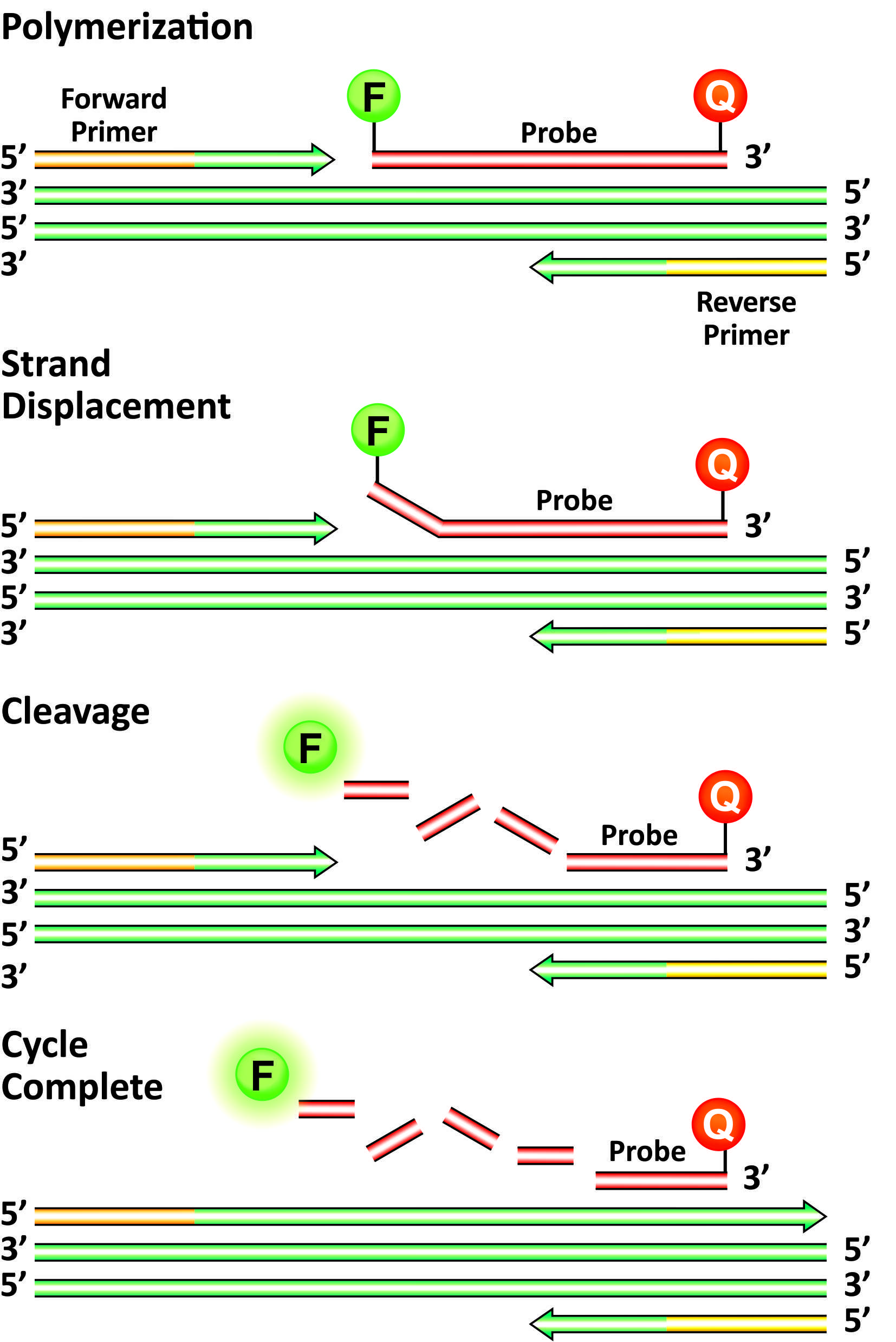Custom Dual labeled qPCR probes
Dual-labeled probe is an oligonucleotide with a fluorescent dye and a quencher that can bind to the complementary DNA strand during amplification. Before the annealing step in PCR the probe is intact and fluorescence is quenched as a fluorophore and a quencher are in close proximity. DNA polymerase during elongation reaches the probe and cleaves the hybridized probe that leads to the increase of fluorescence as a fluorescent dye and a quencher are not connected anymore. Fluorescence increases in each cycle, proportional to the rate of probe cleavage. This type of probes allows to improve the accuracy and selectivity of RT-qPCR.
- Select from a wide range of license-free dyes, including FAM, R6G, VIC, HEX, JOE, TAMRA, ROX and Cy® 5 and Cy5.5 dyes
- Suitable for multiplex detection of several DNA targets in one tube
- Achieve high efficiency of qPCR under fast or standard cycling conditions
- Minimize troubleshooting: probes are HPLC-purified and verified by mass spectrometry*
Fluorophore-Quencher pairs for qPCR Dual-labeled Probes*
| Fluorophore | Quencher** |
| FAM |
TAMRA BHQ1 |
| R6G | |
| SIMA | |
| HEX | |
| R6G | BHQ2 |
| VIC | |
| JOE | |
| HEX | |
| ROX | |
| Cy5 | |
| Cy5.5 | |
| Cy5.5 | BHQ3 |
0

